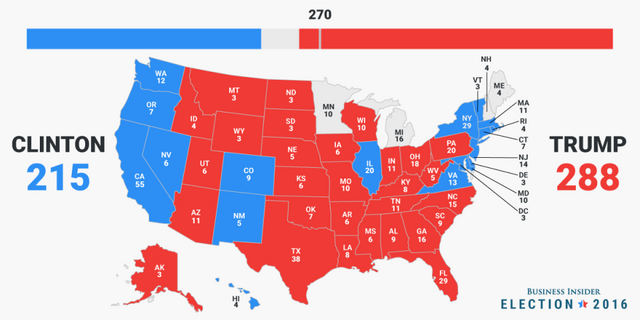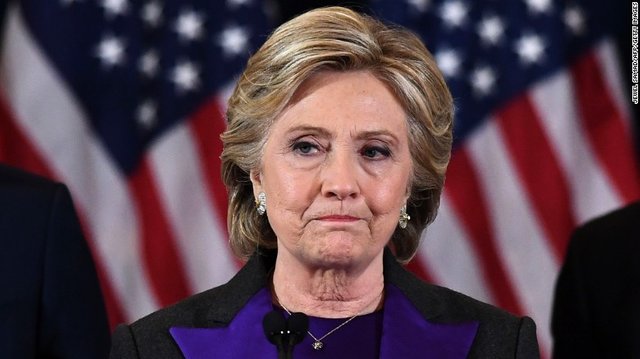On November 9th, 2016, around 2:30am Eastern Time, Donald Trump won enough electoral votes to become the President-elect of the United States of America. Trump’s victory was unprecedented, unexpected, and for many on both sides of the political spectrum, unbelievable.

Seemingly everything we thought we knew about polling, the media, and the population itself was wrong.

So how did Donald Trump win the 2016 Election?
Well, one major upset was the inability to predict which candidate each demographic would prefer. According to preliminary exit polls, Trump carried mostly white, male voters, while Clinton carried minority female voters. But a smaller proportion of white, black, hispanic, and asian-american voters cast their ballots for the Democratic candidate in 2016 than in 2012, something polls were unable to predict. Minority voters were expected to make up for Clinton’s lower performance among white male voters, especially following xenophobic, and arguably racist rhetoric from Trump. Clinton’s inability to garner enough votes from these demographics is part of the reason Clinton narrowly lost in key states such as Wisconsin, Pennsylvania, and Michigan. Since 1992 these states have been Democratic presidential strongholds, but they have large populations of rural and working class white voters, who make up a majority of Trump’s base.

In 2012, Barack Obama beat Mitt Romney in Wisconsin by seven points, whereas this year, Clinton lost by just a single point. Clinton’s problem in 2016 was that she simply did not gather the democratic support she needed, while Trump’s base stayed consistent. Between 2012 and 2016 nearly an identical number of Wisconsin voters, 1.4 million, voted Republican, while roughly a quarter of a million fewer people voted Democrat. When more people vote, Democrats tend to win, and in this election, more people didn’t vote Democrat.
In 2008, nearly ten million more voted democrat than Republican, in 2012 that number was down to six million, and in 2016 the two parties had nearly the same number of voters, and Clinton even won the popular vote by about a quarter of a million. All the while, Republican votes have remained consistent throughout all three elections. It may be more accurate to say that Trump didn’t win this election, so much as Clinton lost it.
One of the big reasons proposed for this low Democratic turnout is that Clinton simply did not widely appeal to Democrat voters following the defeat of Bernie Sanders. Many of those who did not support her in the primaries reported feeling coerced into voting for her on the basis that she simply wasn’t Trump. States where Sanders won the primary, such as Wisconsin and Pennsylvania, didn’t see the support Clinton needed to win in the general election.

Many of the same rural, working class voters who cast their vote for Sanders may have been more inclined to vote for any outsider candidate rather than necessarily any Democrat. Those who voted for Bernie Sanders: white men, and millennials, went for Trump at higher rates than in previous elections. Exit polls even show that more Democrats voted for Trump than Republicans voted Clinton. And while Clinton got more votes overall from minorities, millennials, and those making under $50,000 annually Trump was able to secure a larger portion of those demographics than in previous elections.

The 2016 election was almost marked by extreme voter apathy, despite the volume of rhetoric in the lead up. According to some reports, voter turnout was the lowest it has been since the 2000 election with nearly half of all eligible voters abstaining. This election has proved wrong nearly every political model used to predict the winner. Hillary Clinton put up a strong campaign, raised 1.3 billion dollars, and had some of the best media organization in history.
![]()
But in the face of a growing global populist movement, many have pointed to this election as a referendum on change. Unlike Obama, Clinton was unable to win over the support she needed, despite gaining more votes overall.
Should we really be trusting polls as much as we have? Why has polling accuracy declined so much?
If you liked this article please Upvote, Resteem and Follow me @fproductions for many more funny articles
https://www.nytimes.com/2017/05/31/upshot/a-2016-review-why-key-state-polls-were-wrong-about-trump.html?_r=0
I recently read an article that explained some of the reasons why the polls were off and it seems that one of the largest contributing factors was that many of the polled "undecided" voters did in fact vote for Trump instead of Clinton. There are other reasons the polls were wrong but all in all it seems that the pollsters did in fact make some errors when polling, but their data was fairly sound.
Downvoting a post can decrease pending rewards and make it less visible. Common reasons:
Submit